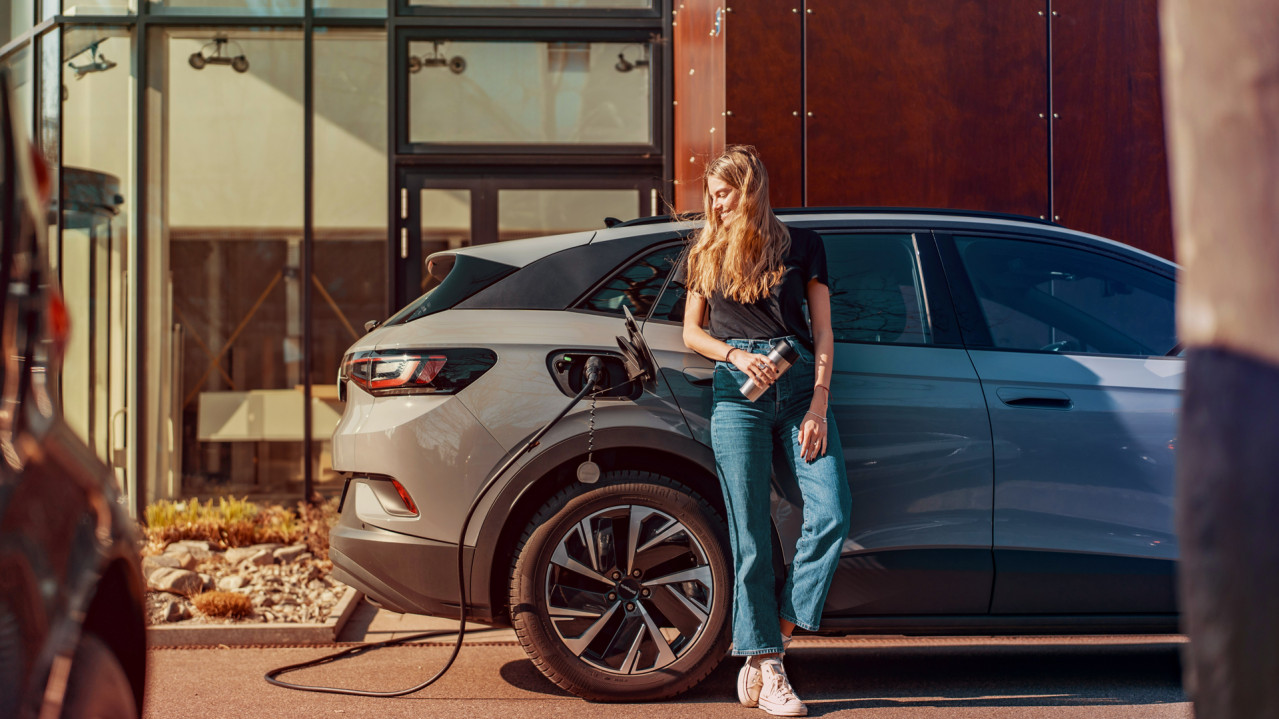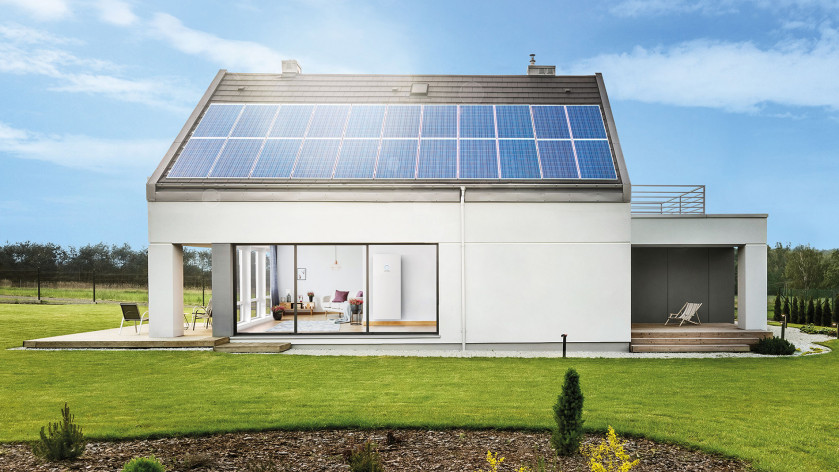
Bidirectional Charging: Will E-Cars Replace Power Storage in the Future?
Bidirectional charging of electric cars is a hot topic when discussing the future of clean energy. But how does bidirectional charging and a bidirectional wallbox actually work? Can electric cars replace local home storage systems in the long term? Read on to find out why this technology is not yet fully developed and why we at sonnen currently advise against replacing it.
How does bidirectional charging work?
Bidirectional charging, also known as bidi charging, is the technical process that enables electric cars to both store energy, and feed this stored energy back into the power grid via the charging infrastructure when required. This technology is not yet widely used in 2024, as only a few suitable electric cars and charging infrastructures (such as wallboxes) technically enable this energy recovery. This means that most e-cars today cannot charge bidirectionally.
Which electric car models already enable bidirectional charging? You can find some examples here on CNET.
The idea is enticing: charging the e-car with solar power that can later be used in the household if needed. The term for this is Vehicle-to-Home (V2H). Another application of bidirectional charging is that electric cars in sufficient numbers can balance fluctuations in the power grid between supply and demand. This is called Vehicle-to-Grid (V2G). Bidirectional charging thus enables energy exchange in two directions, allowing electricity to flow not only into the electric car's battery but also back into the household or grid via the wallbox.
However, an intermediate step is required to use an e-car battery for bidirectional charging. Since electric cars run on direct current while only alternating current is used in households, the alternating current must be converted to direct current when charging. If the electricity is to be fed back into the grid, it must be converted back to alternating current. This is done by an inverter installed either directly in the car or in the wallbox.
What is a bidirectional wallbox?
A bidirectional wallbox is an intelligent charging station for electric vehicles that has a reverse flow function. The function enables flexible use of the stored electricity. Whenever the electric car is parked and connected to the wallbox, it can be used as an (additional) electricity storage unit.
There are currently only a few providers of charging stations or wallboxes that support bidirectional charging. This is because so far only DC wallboxes with a direct current connection are suitable for bidirectional charging. For bidirectional charging to be possible on both the DC and AC sides in the future, the widespread implementation of smart meter gateways, intelligent metering systems, and the ISO 15118.20 communication standard is necessary. According to the ADAC, wallboxes that enable bidirectional charging are estimated to initially be three to four times more expensive than conventional models.
What are the advantages of bidirectional charging of electric cars?
The batteries of electric cars have a high capacity of up to 100 kWh. If they are capable of bidirectional charging, electric cars could provide surplus electricity for households or serve to stabilise the power grid.
If millions of electric cars can charge and discharge depending on supply and demand in the electricity grid, fewer additional electricity storage units would be needed. Bidirectional charging could make an important contribution to the energy transition. However, this is a long way off, as bidirectional charging entails a number of technical requirements and challenges.
Why is bidirectional charging not currently recommended as a replacement for an electricity storage system?
sonnen has been one of Germany's leading electricity storage manufacturers for many years. Thanks to proven technology and top quality, over 140,000 households now rely on the sonnenBatterie, our powerful and future-proof home storage system for all occasions. So, why do we not recommend using an electric car as a replacement for a local electricity storage system with bidirectional charging? Here’s our answer.
The e-car is not available around the clock.
While a sonnenBatterie is installed at a fixed location, the purpose of the car is to be mobile. However, it is only possible to charge the electric car with self-generated solar power when the car is at home.
People who are not permanently at home are often travelling by car at exactly the wrong times, namely during the day when the sun is shining. Due to this, surplus PV electricity cannot be optimally utilised for personal use in the home, but is instead fed into the electricity grid at the current low feed-in tariffs.
With a home storage system, the surplus PV electricity can be stored during the day so that it can be used in the evening hours, minimising the amount of electricity drawn in the evening. By using the electric car as a storage system, a key advantage of stationary batteries is lost: the ability to store your energy at any time when it is not immediately needed.
It also makes little sense to charge the car on the road and then use the electricity at home. Externally charged electricity is more expensive than self-produced, free PV electricity, and the car then has to be recharged the next day, which affects the cycles (see point 2).
Additional charging cycles wear out the e-car battery considerably.
Batteries for electric cars are designed for mobile use, fast charging, and high energy density. For this reason, electric cars usually use cell technologies that favour fast but few charging cycles (e.g. NMC technologies). If the electric car is used not only for driving but also as an energy storage device, the battery is subjected to additional charging cycles that go beyond the intended use case.
The sonnenBatterie with lithium iron phosphate technology (LFP) charges more slowly in comparison, but is more durable and robust. We guarantee that our sonnenBatteries will still have 80 % capacity after 10 years or 10,000 charging cycles, whereas electric cars are currently often said to have 500 to 1,500 charging cycles or an 8-year guarantee.
When using the electric car as a bidirectional storage system, there may be additional restrictions on the service life. For example, one major German car brand limits discharging to a maximum of 10,000 kWh or 4,000 operating hours on the vehicle side. This is still far too little for sensible and sustainable use in the household sector. This clearly shows that car manufacturers do not want to subject their batteries to the same requirements as is usual for home storage systems. Several manufacturers such as BMW, VW, Nissan, Volvo, Skoda, and Tesla already offer bidirectional charging.
Regular bidirectional charging is not financially viable.
There is still a long way to go before bidirectional charging technology is implemented efficiently across the board. Only very few vehicle models are currently equipped for bidirectional charging. As the technology is not yet fully developed, these could soon be technically obsolete.
The corresponding bidirectional chargers are currently not only difficult to obtain but also involve high purchase costs. In addition, the battery wears out more quickly due to daily use as a home storage unit, which not only affects the resale value of the car, but also its profitability. Effectively, this makes a charging cycle with a car battery relatively expensive and uneconomical.
What does the future of bidirectional charging look like?
Even if bidirectional charging with e-cars will become the standard in the future, it is not currently advisable to replace home storage with an e-car. A market launch of bidi-capable vehicles relevant to a broad range of buyers is likely to take several more years, so it makes little sense from today's perspective to wait for this technology.
Those who still want to buy a bidi-capable vehicle are currently recommended to use a combination of home storage and e-car. The home storage system can flexibly store and dispense solar power for optimal self-supply without causing additional wear and tear. The bidirectional vehicle can additionally support as an additional backup in power outages or to increase your degree of energy autonomy.
As a pioneer in the intelligent and connected use of batteries, we are working to offer bidirectional charging with the electric car as an attractive solution in the future, as soon as the technology is more mature and economical. Because every additional energy storage relieves the grid and is important for the success of the energy transition.
With the sonnenCharger and the sonnenBatterie, we already enable smart and cost-efficient charging of e-cars today, even without a bidirectional charging function, by using our own PV power or cheaper grid times. This is the best way to integrate the e-car into a household’s own energy system with the technologies available today. No additional stress is put onto the e-car battery, as the power is only used for driving and is charged anyway.
In combination with the sonnenVPP, smart charging can also smooth out load peaks in the grid and balance frequency fluctuations, as our pilot phase with the transmission system operator Tennet showed at the beginning of 2023. This means that even with simple, but controlled charging, financial advantages can be realized today without additionally wearing out the vehicle's battery.









